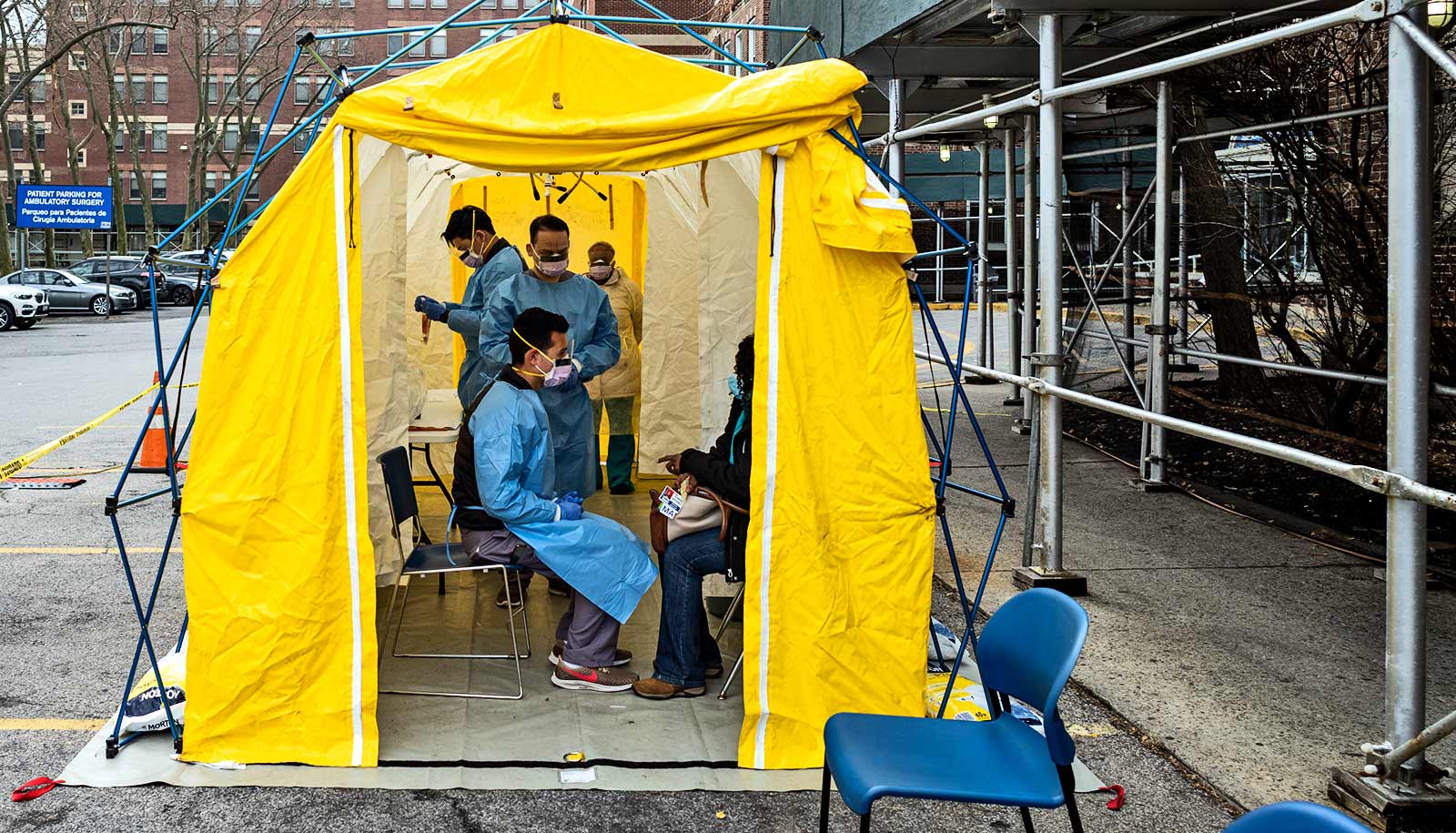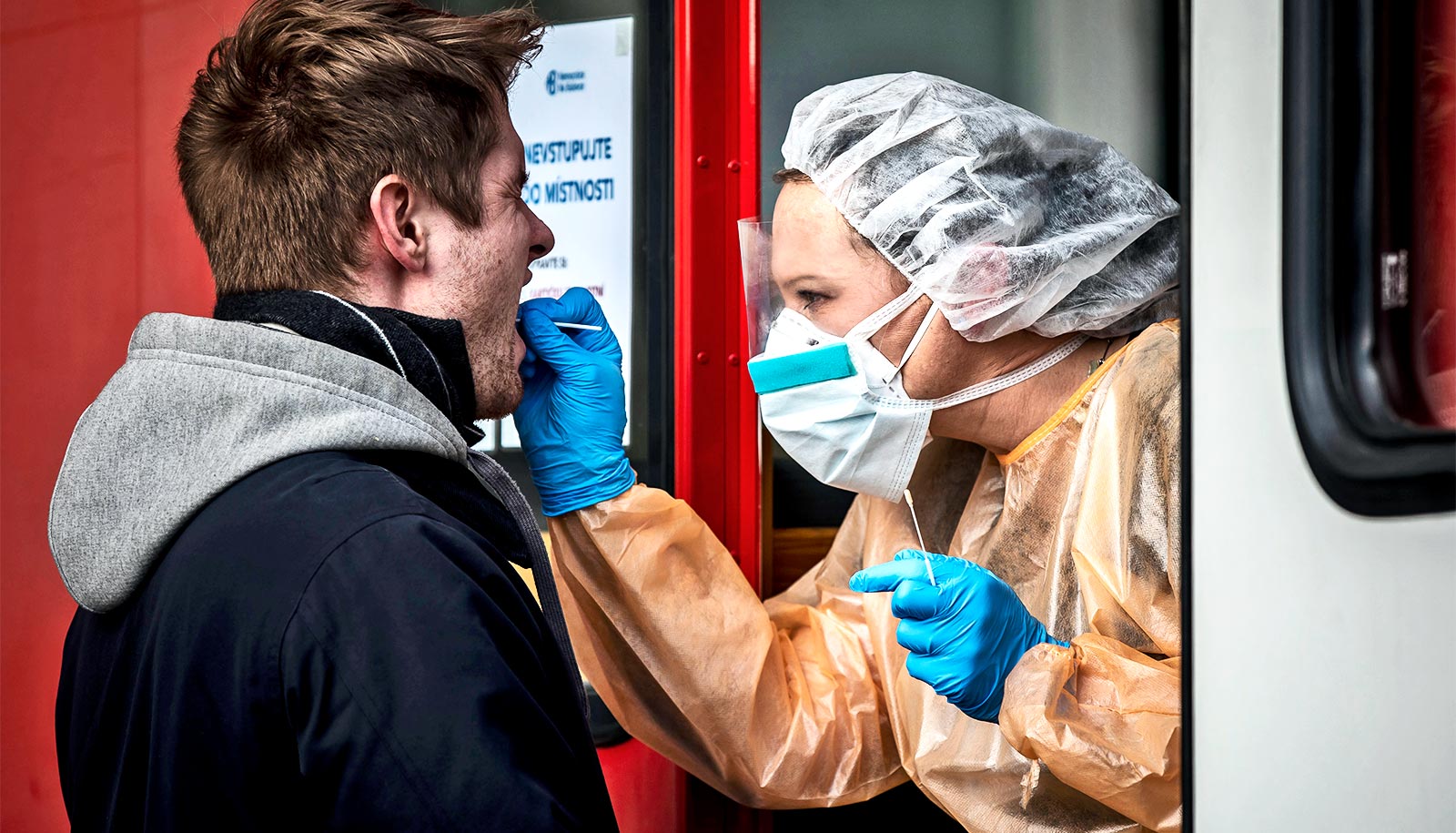Do I have COVID-19? A new online tool lets people everywhere assess how likely it is they’ve contracted the novel coronavirus.
C19check.com makes it easy for the general public to self-triage and is designed, in part, to prevent a surge of patients at hospitals and healthcare facilities.
The free tool comes from Vital software with guidance from Emory Department of Emergency Medicine’s Health DesignED Center and the Emory Office of Critical Event Preparedness and Response.
The site is for educational purposes and not a replacement for a healthcare provider evaluation.
“We’re all fighting, in ways big and small, to keep our loved ones out of harm’s reach. But the anxiety and uncertainty around the best way to do that can result in crowded emergency departments that will have difficulty managing the surge,” says Justin Schrager, emergency medicine physician at Emory University Hospital and co-founder of Vital. “Our goal with C19check.com is to prevent that from happening, while also making it super simple for people to understand and follow CDC guidelines.”
C19check.com acts as an easy way to digest expert information and choose the best plan of action. Based on the answers to questions about signs and symptoms, age, and other medical problems, a person is directed to guidance based on CDC guidelines and is placed into one of three categories:
- high risk (needs immediate medical attention),
- intermediate risk (can contact their doctor for guidance about how to best manage their illness),
- low risk (can most likely administer self-care or recover at home).
In any case, the person is never dissuaded from seeking professional medical advice or contacting their healthcare provider for more guidance.
“Doctors know that crowded waiting rooms could make the problem worse because people sick with COVID-19 could infect others, speeding the overall rate of infection,” says Alex Isakov, executive director of Emory University Office of Critical Event Preparedness and Response, and coauthor of the SORT algorithm. “Keeping stress off the system and limiting exposure for at-risk populations is going to be key to managing the community spread of COVID-19.”
The site is live and will be available for the duration of the COVID-19 public health emergency. It was built as a public service and is completely free. It is available on any computer, and both lay people and medical professionals can use it. It collects no personal information. It makes the company no money. Users can opt to share a zip code to contribute to research tracking the geographic spread and eventual recovery from the pandemic.
“We designed this tool as a way for the public to have something user friendly and evidence based to assess their risk and help guide them to the necessary next steps,” says Anna Quay Yaffee, assistant professor of emergency medicine and director of Global Health in Emergency Medicine Section at Emory University School of Medicine. “We want people who are low risk to have some cautious reassurance, and those who are at higher risk to know how to seek care and get more information.”
“The goal of this tool is to empower individuals, to better understand CDC guidance, and help to inform them about whether they should stay at home, seek medical care or go to the hospital,” says David Wright, chair of the emergency medicine department.
“We understand the public is concerned about the pandemic, about their signs and symptoms. They want guidance and we built this as a resource to help guide their actions, with easy to use, accessible information.”
Source: Emory University



